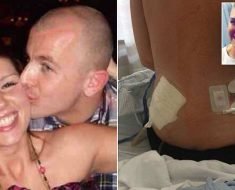The severe acute respiratory syndrome coronavirus 2 (SARS-CoV-2) caused the coronavirus disease 2019 (COVID-19) pandemic, triggering a period of overwhelmed healthcare services and economic instability as the virus tore its way through the world.
The Omicron variant arose in November 2021 and immediately raised serious concerns because of its unprecedented transmissibility.
 Study: Booster of mRNA-1273 Vaccine Reduces SARS-CoV-2 Omicron Escape from Neutralizing Antibodies. Image Credit: hedgehog94/Shutterstock
Study: Booster of mRNA-1273 Vaccine Reduces SARS-CoV-2 Omicron Escape from Neutralizing Antibodies. Image Credit: hedgehog94/Shutterstock
A new preprint on the medRxiv* server reports the results of a study focused on its immune evasion characteristics, specifically its ability to escape neutralization by antibodies to the earlier SARS-CoV-2 variants or to the spike antigen used in COVID-19 vaccines.
Background
The two years since the onset of the pandemic have seen the emergence of several variants of the virus. While some have faded from sight soon after appearing, others have been observed to be more transmissible, virulent, or evade host immune responses more efficientlythan the ancestral variant.
The ability to escape neutralization by natural and therapeutic antibodies leads to a given variant being dubbed a variant of concern (VOC), as does markedly increased transmissibility independent of environmental changes. The earliest variant to emerge was the D614G strain, which rapidly replaced the ancestral Wuhan strain by May 2020 because of its increased capability, which made it more likely to spread rapidly.
It was during the period of D614G dominance that the Moderna mRNA-1273 vaccine was developed. Clinical trials, specifically the Coronavirus Efficacy (COVE) phase three trial, showed it to be 94% efficacious in reducing the incidence of symptomatic illness following SARS-CoV-2.
The titer of binding and neutralizing antibodies to the D614G spike correlated well with vaccine efficacy in this trial. Both of these findings led to the consideration of this spike protein as the reference point for vaccine development and neutralization tests.
It is important to remember, however, that the D614G variant remains among the most easily neutralized variant of SARS-CoV-2 to date. It remained dominant until the beginning of 2021, when the Alpha variant took over, only to be, in its turn, rapidly replaced by the Delta variant.
Both Alpha and Delta variants showed the ability to resist neutralization by antibodies elicited by the Moderna vaccine, but neutralizing capacity fell by only two- to three-fold compared to D614G. There have also been other VOCs like the Beta variant which caused local outbreaks in South Africa for several months, showing marked resistance to vaccine-induced antibodies. Even so, the messenger ribonucleic acid (mRNA) vaccines like Moderna mRNA-1273 continue to offer significant protection against the variant, with only a small reduction in efficacy against serious illness and deaths.
Omicron was also first reported in South Africa, late in 2021. It possesses the largest number of spike mutations among the variants so far, with 15 mutations in the spike receptor-binding domain (RBD), which is the target for over 50 neutralizing antibodies.
What did the study show?
The current study describes the results of neutralizing assays on the Omicron variant using serum samples from people who had received a full course of the mRNA-1273 (100 μg) vaccine, in a pseudovirus assay. The assays on these samples were independently carried out in two different laboratories.
Two sets of samples were used. The first contained selected samples with high neutralizing titers against D614G, while the second had moderate titers. Both Omicron and Beta spike variants were assayed to directly compare the two.
In a second set of tests, serum samples from vaccinated individuals who had got two doses of mRNA-1273 (100 μg) and a third 50 μg boost were assayed in the two laboratories, but different samples were sent to either laboratory. While one laboratory tested serum from individuals who received a 9-month booster, the other used serum samples from a clinical study where the individuals were given a heterologous boost four or more months from the second dose, especially the D614G infected individuals with the highest response.
The researchers wanted to understand how much Omicron resisted neutralization by vaccine-induced antibodies compared to either Beta or D614G. They found that the geometric mean titers (GMT) of the half-maximal infective dose (ID50) were reduced by 84- and 49-fold in the two laboratories, when it came to neutralizing Omicron. Conversely, the Beta VOC had reduced ID50 GMT values also, but only about 14-fold and 9-fold lower.
After the 50 μg boost was given, the neutralization potency went up 12-fold, with the ID50 becoming sixfold and four-fold less potent than with the D614G strain, and ~3-fold lower for the Beta strain. In other words, the third dose booster enhanced neutralization for both the Beta and Omicron variants.
In an interesting subset of samples, vaccinated individuals were followed up over the period beginning two weeks from the second dose, before the booster dose, and two weeks after the second dose. Two of the seven participants were infected withbreakthrough infections about five to six months from the second dose, but before the booster dose.
At this period, the Alpha and Delta variants dominated in the USA. The vaccine-induced antibodies were thus highest against D614G, at the two-week post-vaccine point, but lowest for Omicron. In this situation, Omicron titers were reduced 35-fold, but against Beta, 9-fold lower than with D614G.
Neutralizing titers went down steeply by the day of the boost, but were at their peak by two weeks from the boost, to exceed the titers achieved after the second dose, across all three variants.
The ratio of ID50 GMT values at this point was 13:1 and 7:1, for Omicron and Beta variants, respectively. For two participants who were infected 5 months after the second dose, the vaccine booster response was higher compared to the titers with the vaccine boost alone.
This increase in the neutralizing titer was observed for all three variants despite the fact that neither of them had encountered the Omicron variant until then.
Infection with an earlier variant can enhance the vaccine-response to all three variants, and that additional vaccine boosting can further increase this response.”
Conclusion
The findings of this study show a reduction in Omicron neutralizing titers by 49-84 times compared to D614G, in fully vaccinated individuals (mRNA-1273 vaccine). This indicates a higher risk of symptomatic disease following breakthrough infections. This can be mitigated by a booster dose of the same vaccine, however.
It should be kept in mind that the study was small, and the follow-up short. Further studies should examine the results of this preliminary inquiry into the antibody escape potential of Omicron after vaccination with mRNA-1273, and after a third booster dose.
*Important notice
medRxiv publishes preliminary scientific reports that are not peer-reviewed and, therefore, should not be regarded as conclusive, guide clinical practice/health-related behavior, or treated as established information.
- Doria-Rose, N. A. et al. (2021). Booster of mRNA-1273 Vaccine Reduces SARS-CoV-2 Omicron Escape from Neutralizing Antibodies. medRxiv. doi: https://doi.org/10.1101/2021.12.15.21267805 https://www.medrxiv.org/content/10.1101/2021.12.15.21267805v1
Posted in: Medical Science News | Medical Research News | Disease/Infection News
Tags: Antibodies, Antibody, Antigen, Assay, Coronavirus, Coronavirus Disease COVID-19, Efficacy, Healthcare, Laboratory, Pandemic, Protein, Pseudovirus, Receptor, Respiratory, Ribonucleic Acid, SARS, SARS-CoV-2, Severe Acute Respiratory, Severe Acute Respiratory Syndrome, Spike Protein, Syndrome, Vaccine, Virus

Written by
Dr. Liji Thomas
Dr. Liji Thomas is an OB-GYN, who graduated from the Government Medical College, University of Calicut, Kerala, in 2001. Liji practiced as a full-time consultant in obstetrics/gynecology in a private hospital for a few years following her graduation. She has counseled hundreds of patients facing issues from pregnancy-related problems and infertility, and has been in charge of over 2,000 deliveries, striving always to achieve a normal delivery rather than operative.
Source: Read Full Article





